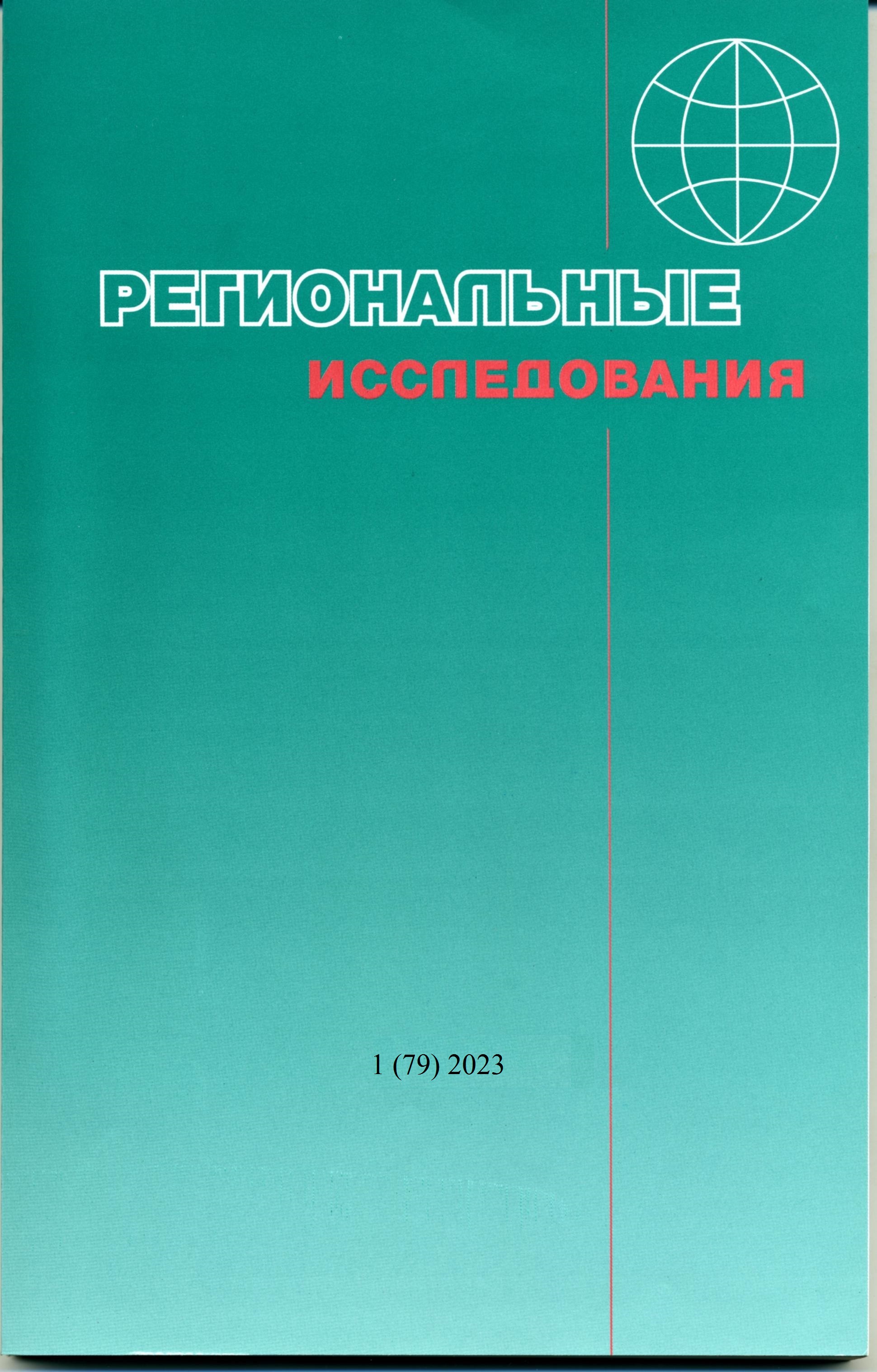Zubarevich N.V., Safronov S.G. Regional inequality and its changes: budget projection
DOI:
https://doi.org/10.5922/1994-5280-2023-1-3Keywords:
budgets of Russian regions, regional inequality, revenues and expenditures of budgets, distribution of taxes by levels of the budget systemAbstract
Measurement of regional budget inequality for 2006–2022 revealed a complex and heterogeneous trends. There was a shift in the distribution of taxes between the levels of the budget system in favor of the federal budget. The reduction in the tax base of more developed regions did not lead to a noticeable mitigation of inequality in budget revenues. There is no general trend in the dynamics of inequality for various taxes: for profit tax it slightly decreased, while for personal income tax, property taxes and
small business taxes it increased. This is a consequence of a complex of factors acting in different directions. The impact of crises on regional budgets tax revenues is ambiguous. During the crises of 2009, 2015, 2020 and 2022 Inequality dynamics varied across different types of taxes. The leveling effect of transfers was more significant only during the crises of 2009 and 2020 due to the sharp increase in their volumes. The level of regional inequality is maximum in terms of taxes received by the federal budget, much less in regional budget revenues, and relatively small in terms of budget expenditures on education and social policy. Inequality between regions in terms of per capita expenditures of regional budgets remains very high, despite some softening over 15 years. The leveling “from below” is more noticeable, due to the reduction of the backlog of less developed regions from the average level.
The leveling is more noticeable in the Far East, the North Caucasus and in the regions of the Center.
Financing
The introduction, parts 1-2 and 5-6 of the section "Results and their discussion" were prepared by N.V. Zubarevich as part of the research work of the state assignment of the RANEPA.
Parts 3-4 of the section "Results and their discussion" were prepared by S.G. Safronov within the framework of the state budget topic of the Research Institute of Geography, Faculty of Moscow State University named after M.V. Lomonosov No. 1.17 "Modern dynamics and factors of socio-economic development of regions and cities of Russia and the Near Abroad."
References
Барбашова Н.Е., Комарницкая А.Н. Оценка зависимости бюджетов регионов от наиболее подверженных воздействию кризиса отраслей // Мониторинг экономической ситуации в России: тенденции и вызовы социально-экономического развития. 2020. № 9 (111). С. 47–50.
Божечкова А.В., Мамедов А.А., Синельников-Мурылев С.Г., Турунцева М.Ю. Стабилизационные свойства трансфертов, выделяемых регионам России из федерального бюджета // Журнал Новой экономической ассоциации. 2018. № 4 (40). С. 61–83.
Веприкова Е.Б., Новицкий А.А., Шевченко И.А. Собственные доходы бюджетов в регионах Дальнего Востока: проблемы и возможности // Власть и управление на востоке России. 2022. № 4 (101). 32–44.
Дерюгин А.Н. Выравнивание регионов: сохраняются ли стимулы к развитию? // Экономическая политика. 2016. Т. 11. № 6. С. 170–191.
Дерюгин А.Н. Бюджеты регионов в 2018 году: лучшие итоги десятилетия // Экономическое развитие России. 2019. Т. 26. № 3. С. 56–62.
Дерюгин А.Н. Региональные бюджеты в 2021 г.: сформирована подушка безопасности // Экономическое развитие России. 2022. Т. 29. № 3. С. 52–55.
Доклад о мировом развитии 2006 года. Справедливость и развитие. М.: Издательство «Весь Мир», 2006. C. 69–80.
Ермакова Е.А. Троянская М.А. Зависимость региональных бюджетов от федеральных налогов // Региональная экономика: теория и практика. 2015. № 36. С. 26–35.
Журавлева Т. Лидирующие позиции налога на доходы физических лиц в доходах бюджетов регионов ЦФО и изменение их значимости в условиях кризиса // Финансовая жизнь. 2016. № 2. С. 17–21.
Захарчук Е.А., Трифонова П.С. Консолидированные бюджеты регионов Уральского федерального округа: тренды развития // Вестн. евразийской науки. 2022. Т. 14. № 5. С. 1–16.
Землянский Д.Ю., Климанов В.В. Консенсус-прогноз состояния консолидированных бюджетов регионов на 2022 г. //Экономическое развитие России. 2022. Т. 29. № 4. С. 53–58.
Зубаревич Н.В. Регионы России в период пандемии: социально экономическая динамика и доходы бюджетов // Журнал Новой экономической ассоциации. 2021. № 3. C. 208–217.
Коломак Е.А., Сумская Т.В. Роль федеральных трансфертов в субнациональной бюджетной системе Российской Федерации и ее азиатской части // Развитие территорий. 2022. № 3. С. 30–42.
Лыкова Л.Н. Консолидированные бюджеты субъектов Российской Федерации в 2020 г.: возможности выполнения обязательств в условиях кризиса // Федерализм. 2021. Т. 26. № 1 (101). С. 207–220.
Милек О.В., Шмерлинг Д.С. Дифференциация доходов населения: к возможности социальноэкономической интерпретации показателей // XIV Апрельская междунар. научн. конф. по проблемам развития экономики и общества. М: НИУ ВШЭ, 2014. C. 184–192.
Мильчаков М.В. Высокодотационные регионы России: условия формирования бюджетов и механизмов государственной поддержки // Финансовый журнал. 2017. № 1 (35). С. 22–38.
Мохнаткина Л.Б. Оценка неравенства регионов в формировании доходов федерального бюджета на основе критерия Парето // Экономика региона. 2020. Т. 16. № 4. С. 1377–1392.
Сериков С.Г., Чупракова К.Е. Оценка структуры и динамики поступлений НДС в федеральный бюджет на примере регионов Дальневосточного федерального округа // Сибирская финансовая школа. 2018. № 5. С. 52–56.

